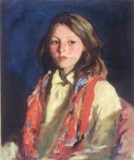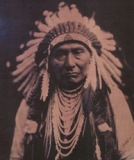This article may not be published or printed elsewhere without the express permission of IFAR
September 11th:
ART LOSS, DAMAGE, AND REPERCUSSIONS
Proceedings of an IFAR Symposium on February 28, 2002
The Art Lost by Citigroup on 9/11
by Suzanne F. W. Lemakis
[Suzanne F. W. Lemakis is Vice-President and Art Curator, Citigroup.]
As curator of the Citigroup Collection, my responsibilities are similar to that of a museum curator. I oversee the development of the art collection and its management. However, unlike a museum, the primary purpose of the corporate collection is not to educate and preserve, but rather, and more importantly, to enhance the corporation's image and environment while providing visual stimulation for both staff and customers. Of course, the corporate curator is responsible for setting standards for the preservation of the collection, as the collection is always considered to be a valuable corporate asset.
In October 1998, an historic merger took place—Citicorp and Travelers Group merged to form Citigroup. Citigroup is today the preeminent global financial services company offering a range of services from investment banking, insurance and asset management, to consumer banking, credit cards, mortgage loans, and consumer finance. Among the companies that became one were Citibank N.A., Travelers Insurance, Salomon Smith Barney, Primerica, and Commercial Finance Corp. Soon after the merger, I requested that copies of all existing records for artwork, including any photo documentation, be sent to my office so that I could better understand the scope of the merged collection. On September 11th, Citigroup lost over one million square feet of office space when Seven World Trade Center collapsed in late afternoon. Fortunately, all of our employees (as well as all other occupants) in the building had been evacuated earlier, but unfortunately, all our furnishings, records, and artwork was lost.
Seven World Trade Center originally served as the corporate headquarters of Salomon Brothers, an investment bank founded in 1910, and the predecessor of Salomon Smith Barney. Investment banks handle big deals; in other words, their clients invest millions of dollars with the company. Because investment banking is about client relationships, investment banks have traditionally had offices characterized by an upscale ambience, suitable to their business needs. Salomon Smith Barney occupied close to twenty floors. Seven World Trade housed executive dining rooms, back office facilities and very dignified and conservative (but not luxurious) offices to conduct business. These offices were enhanced with art, with the most valuable works installed in dining rooms and executive offices.
As I mentioned, we lost all art and archival records relating to Salomon's history. Losing the history of this old banking firm is a real tragedy. Fortunately, there had been a history written for Salomon's seventy-fifth anniversary. But, while copies of the history still exist, future historians will be left with scant original sources for the history of one of the most important American financial institutions.
Although Salomon's rivals, such as Goldman Sachs, had well-established art programs, Salomon did not have a comprehensive or focused art program. The collection's mission was to decorate the offices in a way that set a comfortable and conservative tone for business; the art challenged neither the clients nor the employees. The design department, headed by a very talented designer, selected some of the art for the premises and handled the art collection. A number of other people were involved in the purchases, and, as I researched the history of the collection, one man's name was mentioned over and over again: Charles Simon. Mr. Simon was a managing partner of Salomon Brothers, an art collector, a member of the Board of Trustees of the Whitney Museum of American Art, and a supporter of the Museum of the American Indian. His taste was instrumental in many of the significant artworks that were purchased for the Salomon collection. I am pleased to report that many of his purchases have survived, and here is why:
A year before 9/11, the executive dining rooms at Seven World Trade Center were refurbished and a number of the artworks were placed in storage. Subsequently, Citigroup's corporate headquarters were being relocated in Manhattan and so accordingly, I, as curator, removed some of these Salomon pieces from the warehouse and placed them on the new executive floor. Among the artworks "rescued" in this way were a Robert Henri portrait of a young Irish girl from 1924 (Fig. 1), a 1911 William Glackens landscape, an Ernest Lawson painting titled New York Bridge, a 1926 Else Driggs painting of St Bartholomew's Church, an Andrew Wyeth watercolor titled My Dog, and a Ralston Crawford painting titled Electrical Energy Number Two. These were among the important American paintings in the collection.There was also a small collection of nineteenth- and twentieth-century marine paintings purchased by Mr. Simon. Among the gifts given to Mr. Simon were two Frederick Remington bronzes and a wonderful Edward Curtis platinum print (Fig. 2) of Chief Joseph, Nez Perce dated 1903, which he donated to the Salomon collection. These artworks would have been welcomed in any museum, and it is just pure luck that they were not in the building when it fell.
 Figure 1. Robert Henri. Alice Malley,1924. Oil on canvas, 31" x 27". Property of Citigroup |
 Figure 2. Edward Curtis, platinum print, 1903. Chief Joseph, Nez Perce. Photo: Citigroup. |
Continue to page 2